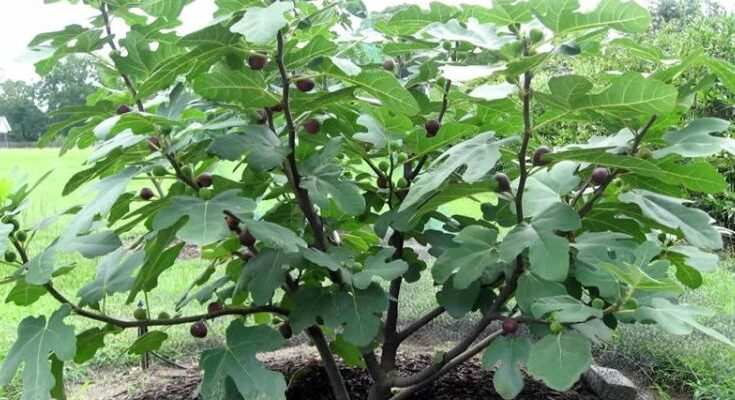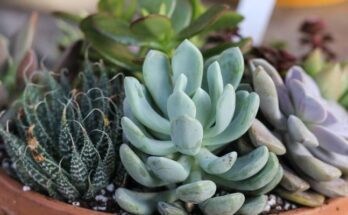|
Getting your Trinity Audio player ready...
|
The fig plant, Ficus carica, is a versatile and attractive addition to any garden. Native to the Mediterranean, it thrives in warm climates, making it perfect for Indian gardens. Known for its sweet, nutritious fruits and distinctive lobed leaves, the fig plant is easy to grow with minimal care. It thrives in well-drained soil and abundant sunlight. Figs can be grown in containers, ideal for small spaces. Besides its culinary appeal, the plant’s leaves have traditional medicinal uses. Overall, the fig plant combines aesthetic beauty with practical benefits, enriching both garden and kitchen.
Scientific Classification of Fig Plant (Ficus Carica)
| Kingdom | Plantae |
|---|---|
| Phylum | Angiosperms |
| Class | Eudicots |
| Order | Rosales |
| Family | Moraceae |
| Genus | Ficus |
| Species | Ficus carica |
Fig Plant Care
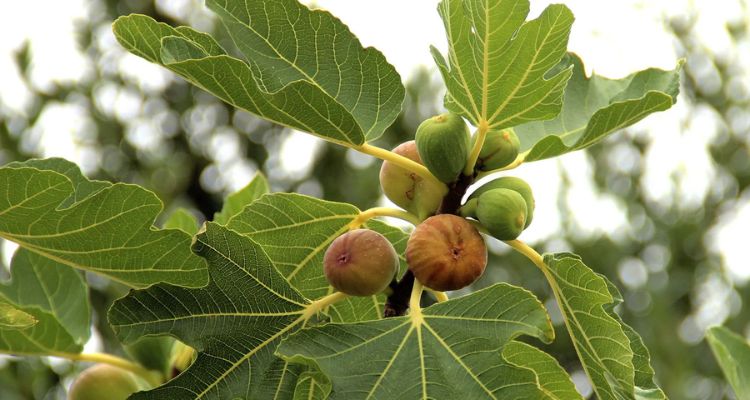
Figs are a delightful addition to any garden or home, offering lush foliage and sweet fruit. Caring for a fig plant requires a mix of proper watering, sunlight, and maintenance to ensure it thrives.
- Light and Temperature: Figs thrive in full sun, needing at least 6-8 hours of direct sunlight daily. They prefer warm climates but can tolerate cooler temperatures. If you’re growing figs indoors, place them near a sunny window.
- Watering: While figs like consistent moisture, they don’t do well in waterlogged soil. Give the plant a deep watering when the top inch of soil becomes dry. In hot and dry conditions, you may need to water it more frequently.
- Soil and Fertilization: Figs prefer well-draining soil rich in organic matter. Enhancing soil fertility can be achieved by adding compost or well-rotted manure. Fertilize fig plants in the early spring with a balanced, slow-release fertilizer to encourage growth and fruit production.
- Pruning and Maintenance: Pruning is essential for fig plant health and productivity. Prune in late winter or early spring, removing dead or diseased wood and thinning out crowded branches to allow light and air to penetrate.
- Pests and Diseases: Watch out for pests like aphids, scale, and fig rust. Regular inspection and natural insecticides can help manage these issues. Keeping the area around the plant clean and free of debris also reduces the risk of disease.
With these care tips, your fig plant will flourish, providing you with delicious fruit and a touch of greenery in your space.
Don’t Miss: Sandalwood Tree | Characteristics, Uses, Facts, Lifespan, Types and More
7 Ultimate Benefits of Fig Plants
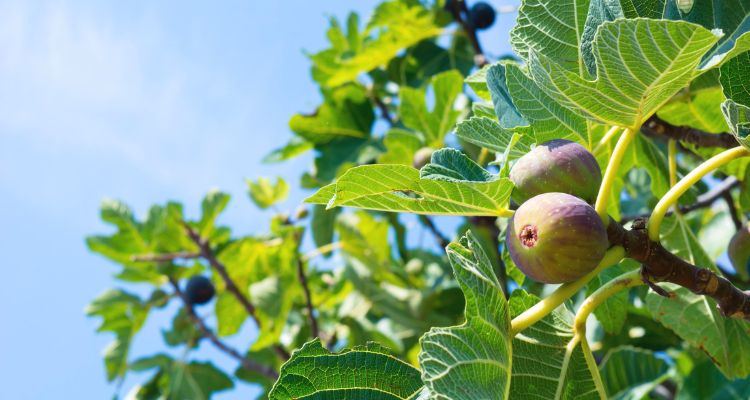
Fig plants, known for their delicious fruit and ornamental appeal, offer numerous benefits that make them a worthwhile addition to any home or garden. From nutritional value to environmental advantages, here are the key benefits of fig plants:
- Nutritional Powerhouse: Figs are rich in essential nutrients, including vitamins A, B1, B2, and K, as well as minerals like potassium, magnesium, calcium, and iron. They are an excellent source of dietary fibre, promoting digestive health and aiding in weight management.
- Antioxidant Properties: Figs contain high levels of antioxidants, such as flavonoids and polyphenols, which help combat oxidative stress and reduce the risk of chronic diseases. These antioxidants support overall health by neutralizing free radicals in the body.
- Heart Health: The potassium content in figs helps regulate blood pressure, while the fibre aids in reducing cholesterol levels. Regular consumption of figs can contribute to improved cardiovascular health and lower the risk of heart disease.
- Skin Health: Figs are beneficial for skin health due to their anti-inflammatory and antimicrobial properties. Applying fig extracts or consuming the fruit can help maintain healthy, glowing skin and combat conditions like acne and eczema.
- Bone Health: With high calcium content, figs support strong bones and teeth. They also contain other bone-friendly minerals like magnesium and phosphorus, making them a great addition to a diet focused on bone health.
- Environmental Benefits: Fig plants are relatively easy to grow and maintain, making them an eco-friendly option for home gardens. They require minimal pesticides and fertilizers, reducing environmental impact. Additionally, fig trees can help improve air quality by absorbing carbon dioxide and releasing oxygen.
- Culinary Versatility: Figs can be enjoyed fresh, dried, or cooked in various dishes. They add natural sweetness to salads, desserts, and baked goods, making them a versatile ingredient in the kitchen.
Incorporating fig plants into your lifestyle not only enhances your diet with nutritious fruit but also brings a touch of natural beauty to your surroundings. Whether for health benefits or environmental impact, fig plants are a valuable addition to any home.
Don’t Miss: Succulent Plant | Care, Types, Benefits and Décor Ideas
How to Grow a Fig Plant: A Step-by-Step Guide
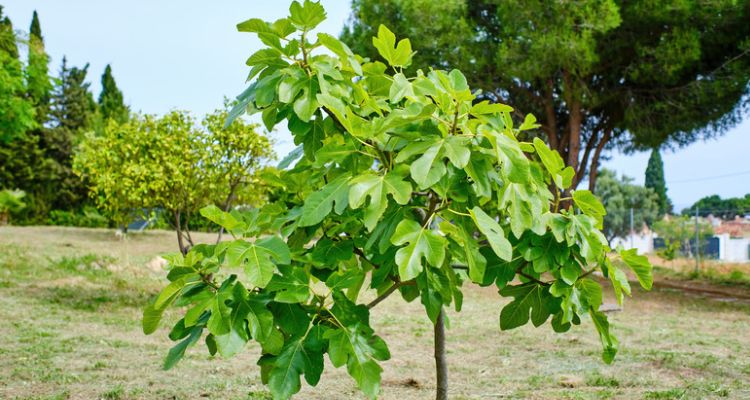
Growing a fig plant is a rewarding experience, providing delicious fruit and a touch of greenery to your garden or home. Here’s a detailed guide to help you successfully cultivate a fig plant.
1. Selecting the Right Variety
Choose a fig variety suited to your climate. Common varieties include ‘Brown Turkey’, ‘Celeste’, and ‘Black Mission’. Consult with local nurseries to find the best type for your area.
2. Planting Location
- Sunlight: Figs need full sun to thrive. Choose a spot that gets a minimum of 6-8 hours of direct sunlight each day.
- Soil: Ensure well-draining soil. Figs prefer slightly acidic to neutral pH levels. You can amend heavy clay or sandy soil with compost to improve its quality.
3. Planting Time
- Best Season: Plant fig trees in early spring or late fall when the plant is dormant.
- Container vs. Ground: If you live in a region with cold winters, consider growing your fig in a container to move it indoors during freezing temperatures.
4. Planting Process
- Digging the Hole: Dig a hole twice the width and the same depth as the root ball.
- Positioning: Place the fig tree in the hole, ensuring the roots are spread out. Ensure the top of the root ball is even with the ground surface.
- Backfilling: Fill the hole with soil, pressing down gently to remove air pockets. Water thoroughly after planting.
5. Watering and Mulching
- Watering: Water consistently, particularly during the first year. Maintain soil moisture without making it waterlogged.
- Mulching: Apply a layer of mulch around the base of the plant to retain moisture and regulate soil temperature.
6. Fertilizing
- Timing: Fertilize in early spring and again in late summer.
- Type: Use a balanced, slow-release fertilizer. Over-fertilizing can lead to more foliage growth at the expense of fruit production.
7. Pruning
- When to Prune: Prune fig trees in late winter or early spring before new growth starts.
- How to Prune: Remove dead or diseased branches, and thin out crowded areas to allow light and air to penetrate the canopy.
8. Pest and Disease Management
- Common Pests: Watch for pests like aphids, scale, and nematodes. Use natural insecticides or introduce beneficial insects to manage infestations.
- Diseases: Prevent fungal diseases by promoting good air circulation and avoiding watering from above.
9. Winter Protection
- Outdoor Plants: If your region experiences freezing temperatures, wrap the fig tree in burlap or move container-grown figs indoors.
- Mulching: Apply extra mulch around the base to insulate the roots.
10. Harvesting
- When to Harvest: Figs are typically ready for harvest in late summer. They should be fully ripe, slightly soft to the touch, and easy to pick.
- How to Harvest: Gently twist the fruit to detach it from the tree. Handle figs carefully as they are delicate and bruise easily.
By following these steps, you can enjoy a thriving fig plant that produces delicious fruit year after year.
Don’t Miss: Desert Rose Care, Benefits, Seeds, Vastu, Leaf Health, and Pruning Tips
7 Uses of Fig Plants

Fig plants, known for their lush foliage and sweet fruit, offer a variety of uses that extend beyond just their aesthetic appeal. Here are some of the most notable uses of fig plants:
1. Culinary Uses
- Fresh Consumption: Figs are a delicious and nutritious snack when eaten fresh. They are sweet, juicy, and can be enjoyed on their own or with other fruits.
- Cooking and Baking: Figs are versatile in the kitchen. They can be used in salads, desserts, jams, and preserves. Fresh or dried figs add natural sweetness and texture to cakes, pies, and bread.
- Dried Figs: Dried figs are a convenient and healthy snack. They can also be used in cooking, providing a concentrated sweetness to dishes like stews and tagines.
2. Nutritional Benefits
- Rich in Nutrients: Figs are packed with essential vitamins and minerals, including vitamin A, B vitamins, potassium, magnesium, and calcium.
- Dietary Fiber: High in dietary fiber, figs support digestive health and can help with weight management.
- Antioxidants: Figs contain antioxidants such as polyphenols, which help protect cells from oxidative damage and support overall health.
3. Medicinal Uses
- Digestive Health: Figs are known for their natural laxative properties, which can help alleviate constipation.
- Skin Care: The milk-like sap of fig leaves can be used to treat skin conditions such as warts and eczema. Fig extracts are also found in skincare products for their moisturizing and anti-aging properties.
- Blood Sugar Control: Some studies suggest that fig leaves can help lower blood sugar levels, making them beneficial for people with diabetes.
4. Ornamental Value
- Indoor Plants: Fig plants, like the Fiddle Leaf Fig (Ficus lyrata), are popular houseplants. They add a touch of greenery and elegance to indoor spaces.
- Landscaping: Fig trees are attractive additions to gardens and landscapes. Their large leaves provide shade, and their unique shape adds visual interest.
5. Environmental Benefits
- Air Purification: Fig plants help improve indoor air quality by absorbing pollutants and releasing oxygen.
- Soil Improvement: Fig trees have extensive root systems that can help prevent soil erosion. Their fallen leaves add organic matter to the soil, enhancing its fertility.
6. Cultural and Historical Significance
- Symbolism: Figs have been symbols of fertility, peace, and prosperity in various cultures throughout history.
- Religious Uses: Figs and fig leaves are mentioned in many religious texts, including the Bible and the Quran, highlighting their importance in religious and cultural traditions.
7. Animal Feed
- Livestock: In some regions, fig leaves and fruit are used as feed for livestock, providing a nutritious supplement to their diet.
By understanding the diverse uses of fig plants, you can appreciate their value beyond just their delicious fruit. Whether for health, beauty, or environmental benefits, fig plants are a versatile and beneficial addition to any home or garden.
Don’t Miss: Teak Tree | Uses, Leaves, Wood, Benefits, Life Cycle & Growing
All About Fig Plant Leaves: Characteristics, Uses, and Care

Fig plant leaves are not only integral to the plant’s health and growth but also offer various uses and benefits. Here’s a comprehensive look at fig plant leaves:
Characteristics of Fig Plant Leaves:
- Shape and Size: Fig leaves are typically large, broad, and deeply lobed, with three to five lobes. The leaves can grow up to 10 inches in length and width.
- Texture: The leaves have a rough texture on the upper surface and a softer, fuzzy underside. They are usually dark green on the top and lighter green underneath.
- Aroma: When crushed, fig leaves emit a distinct, pleasant fragrance.
Uses of Fig Plant Leaves:
1. Culinary Uses
- Fig Leaf Tea: Fig leaves can be dried and brewed into a herbal tea, which is believed to have various health benefits, including regulating blood sugar levels.
- Culinary Wrapping: In Mediterranean and Middle Eastern cuisines, fig leaves are used to wrap foods such as fish and cheese, imparting a unique flavor when grilled or steamed.
- Flavoring Agent: The leaves can be used to infuse a subtle, nutty flavor into dishes, especially dairy products like milk and cream.
2. Medicinal Uses
- Diabetes Management: Fig leaf extracts are traditionally used to help control blood sugar levels in diabetics. They may be consumed in tea form or as part of herbal remedies.
- Skin Treatments: The milky sap of fig leaves can be applied topically to treat skin conditions such as warts, eczema, and psoriasis. Fig leaf extracts are also used in some skincare products for their moisturizing and anti-inflammatory properties.
3. Environmental Benefits
- Air Purification: Fig leaves contribute to air purification by absorbing pollutants and releasing oxygen, improving indoor air quality.
- Shade and Aesthetic Appeal: The large, lush leaves provide excellent shade and are aesthetically pleasing, making fig plants a popular choice for gardens and landscapes.
Care and Maintenance of Fig Plant Leaves:
1. Sunlight
- Requirements: Fig leaves need plenty of sunlight to thrive. Ensure your fig plant gets at least 6-8 hours of direct sunlight daily.
- Indoor Lighting: If growing figs indoors, place the plant near a sunny window. Consider using grow lights during the darker months to supplement natural light.
2. Watering
- Consistency: Fig plants prefer consistent moisture but do not tolerate waterlogged soil. Thoroughly water the plant when the top inch of soil is dry.
- Humidity: Maintain moderate humidity levels, especially for indoor plants, by misting the leaves occasionally or placing a humidity tray nearby.
3. Pruning
- Health: Regular pruning helps maintain the health and shape of the fig plant. Remove any dead, diseased, or yellowing leaves to prevent the spread of diseases.
- Growth: Pruning also encourages new growth and improves air circulation within the plant.
4. Pest Management
- Common Pests: Fig leaves can be susceptible to pests like aphids, spider mites, and scale. Inspect the leaves regularly and treat any infestations promptly with natural insecticides or neem oil.
- Disease Prevention: To minimize the likelihood of fungal diseases, refrain from watering plants from above. Ensure good air circulation around the plant.
Interesting Facts About Fig Leaves
- Historical Significance: Fig leaves are famously known from the biblical story of Adam and Eve, where they used fig leaves to cover themselves.
- Cultural Symbolism: In various cultures, fig leaves symbolize fertility, prosperity, and peace.
Understanding the characteristics, uses, and care of fig plant leaves can enhance your appreciation and management of this versatile plant. Whether for culinary, medicinal, or ornamental purposes, fig leaves offer a range of benefits worth exploring.
Don’t Miss: Rubber Tree | Facts, Uses, Wood, Seeds & Care
About Fig Plant Flower
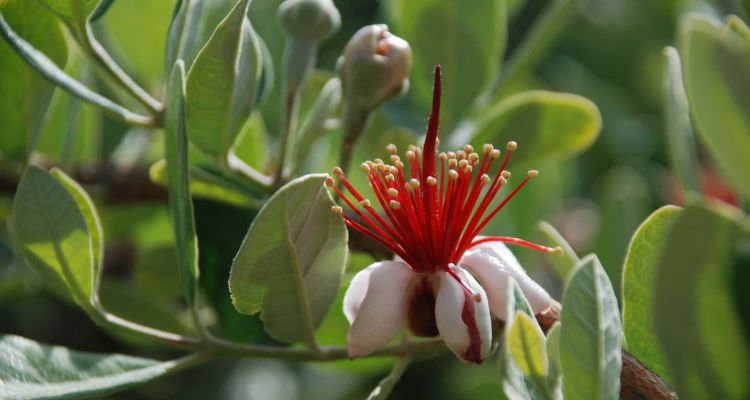
The fig plant (Ficus carica) has a unique flowering process that sets it apart from typical fruit-bearing plants. Unlike most plants, fig flowers are hidden inside the fruit, known as a syconium. This hollow, fleshy structure contains tiny male, female, and sterile (gall) flowers lining its inner walls.
The pollination of fig flowers relies on a specific fig wasp (Blastophaga psenes). The wasps enter the syconium through a small opening, called the ostiole, to lay their eggs, inadvertently pollinating the female flowers in the process. This mutualistic relationship is essential for the development of fig fruit.
Common figs (such as ‘Brown Turkey’ and ‘Black Mission’) can develop fruit without pollination, while Smyrna figs require wasp pollination to produce viable fruit. This intricate pollination process highlights the fig plant’s unique role in nature’s complex web of interactions.
Wrapping Up
The fig plant is a remarkable addition to any garden or home, offering a unique blend of aesthetic beauty, nutritional benefits, and environmental value. From its distinctive flowering process to its versatile uses in culinary and medicinal applications, the fig plant stands out for its numerous advantages. Whether you are drawn to its delicious fruit, intrigued by its mutualistic relationship with fig wasps, or simply looking to enhance your living space with a touch of greenery, the fig plant has something to offer everyone. You can enjoy the many benefits of this fascinating plant by following proper care and cultivation techniques. Embrace the joy of growing a fig plant and discover how it can enrich your life in multiple ways.
Don’t Miss: Cherry Tree | Facts, Benefits, Cultural Significance, Varieties, & How to Grow
